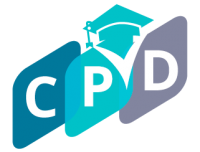Introduction:
As parents and educators seek to provide the best possible academic support for students, the debate between small group and one-on-one tuition continues to be a pivotal consideration. Each approach has its unique advantages, and understanding the individual needs of your child is crucial in making an informed decision. In this article, we will explore the characteristics of small group and one-on-one tuition, helping you navigate the path to choosing the right learning environment for your child.
1. **Small Group Tuition:**
Small group tuition involves a tutor working with a limited number of students, typically ranging from two to six individuals. This setting offers a collaborative learning experience that fosters interaction and peer engagement. Here are some key considerations when contemplating small group tuition for your child:
– **Social Interaction and Collaboration:**
Small group tuition provides a social setting that encourages students to collaborate and engage in discussions. This interaction can lead to the exchange of ideas, diverse perspectives, and a shared learning experience. For students who thrive in a social environment and benefit from peer interaction, small group tuition can be an effective choice.
– **Cost-Effective Option:**
From a financial standpoint, small group tuition is often more cost-effective than one-on-one sessions. The shared cost among students makes this option more accessible to a broader range of families while still offering personalized attention from the tutor.
– **Teamwork and Accountability:**
Working in a small group fosters a sense of teamwork and accountability. Students may feel a shared responsibility for their learning, motivating each other to stay focused and committed to achieving academic goals.
2. **One-on-One Tuition:**
One-on-one tuition involves a dedicated tutor working individually with a student. This personalized approach allows for a highly customized learning experience tailored to the specific needs and learning style of the student. Consider the following aspects when evaluating one-on-one tuition for your child:
– **Individualized Attention:**
Perhaps the most significant advantage of one-on-one tuition is the undivided attention the student receives from the tutor. This focused interaction allows for a deep understanding of the student’s strengths, weaknesses, and learning pace. The tutor can tailor the teaching approach to match the student’s unique requirements.
– **Customized Curriculum:**
In a one-on-one setting, the tutor can design a curriculum that addresses the specific academic challenges and goals of the student. This customization ensures that the learning experience is precisely aligned with the student’s needs, maximizing the efficiency of the tutoring sessions.
– **Flexible Pacing:**
One-on-one tuition offers the flexibility to adjust the pace of learning according to the student’s comfort and comprehension level. The tutor can spend more time on challenging topics, accelerate through familiar concepts, and adapt teaching strategies as needed.
3. **Choosing What’s Right for Your Child:**
Making the decision between small group and one-on-one tuition ultimately depends on your child’s individual preferences, learning style, and specific academic requirements. Consider the following factors:
– **Learning Style:**
Evaluate whether your child thrives in a collaborative environment with peer interaction or if they require more individualized attention to grasp concepts effectively.
– **Academic Goals:**
Consider your child’s academic goals and the level of support they need. If your child is struggling with specific subjects or requires intensive preparation for exams, one-on-one tuition may be the preferred option.
– **Budgetary Considerations:**
Assess your budget and weigh the cost-effectiveness of small group tuition against the personalized attention provided by one-on-one sessions.
Conclusion:
In the small group vs. one-on-one tuition debate, there is no one-size-fits-all answer. Both approaches have their merits, and the decision should be based on a thorough understanding of your child’s learning style and academic needs. Whether your child thrives in a collaborative setting or benefits from individualized attention, the ultimate goal is to provide them with the support and tools necessary for a successful and fulfilling learning journey.
